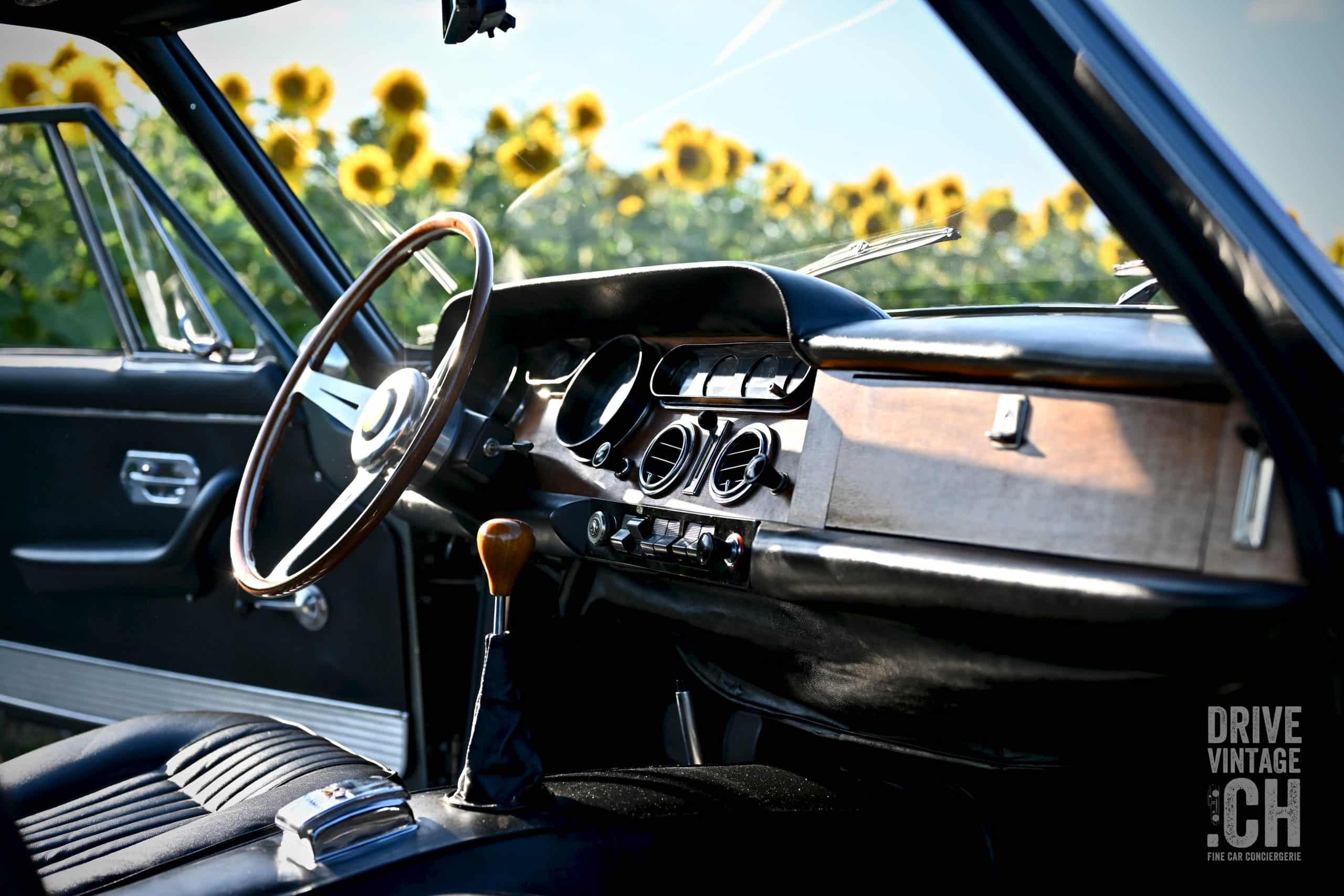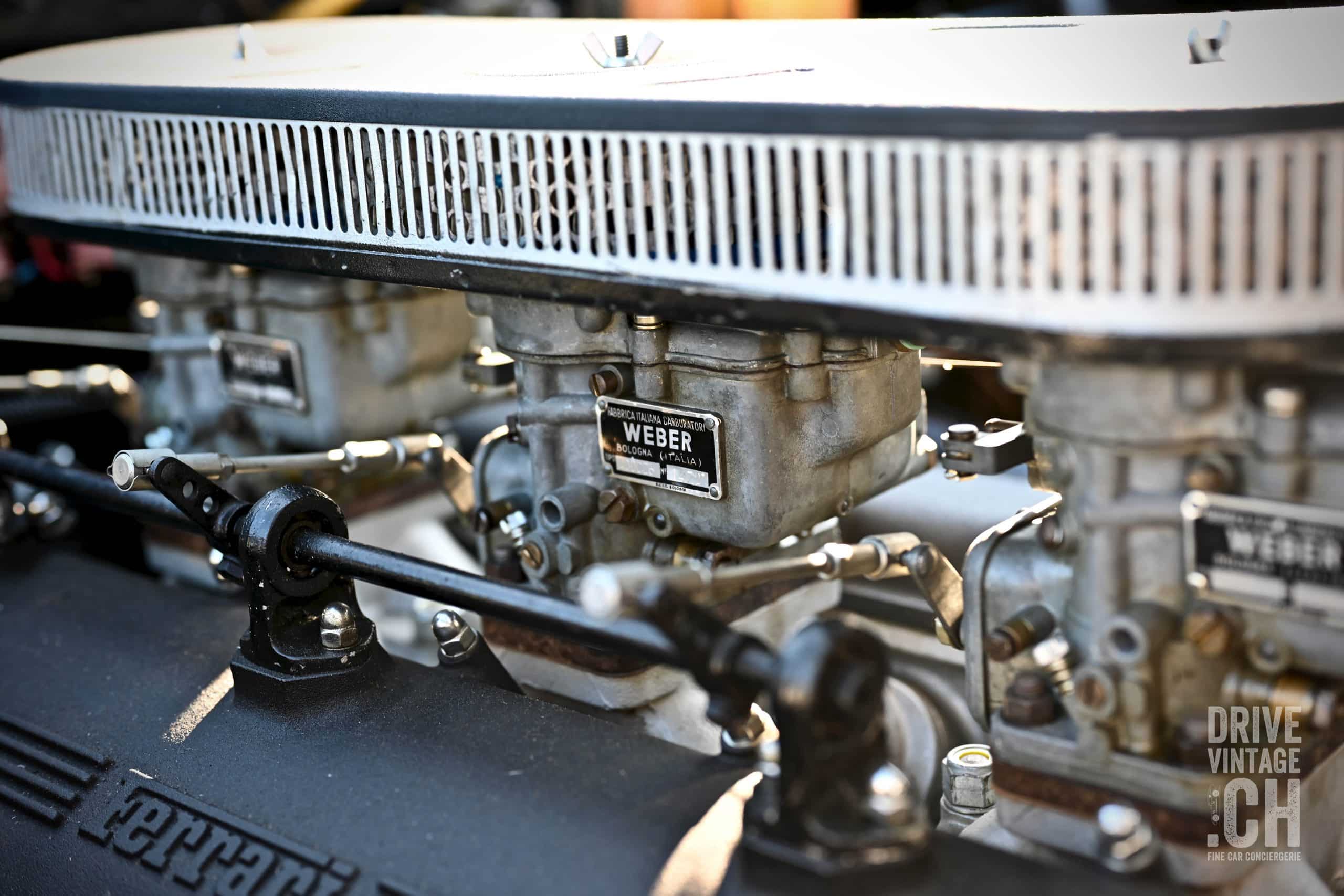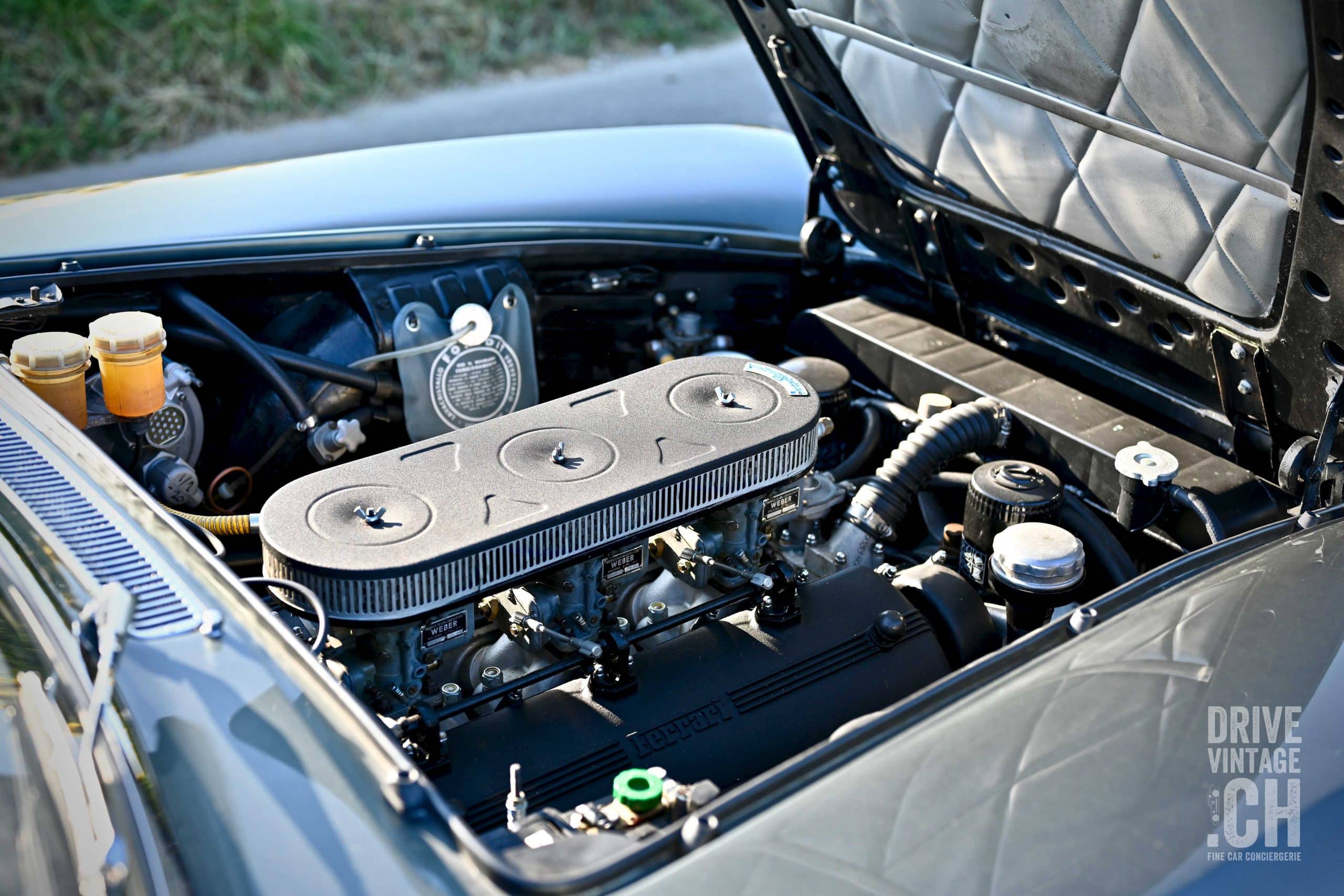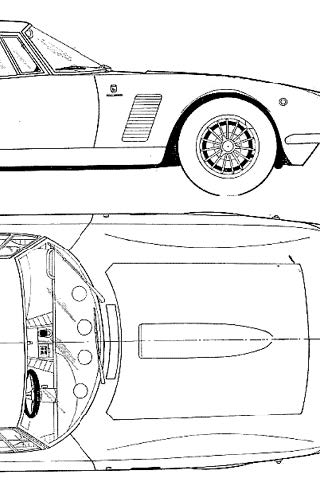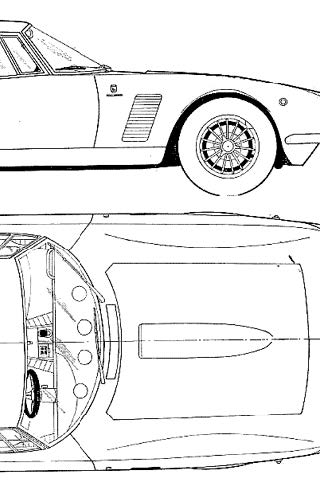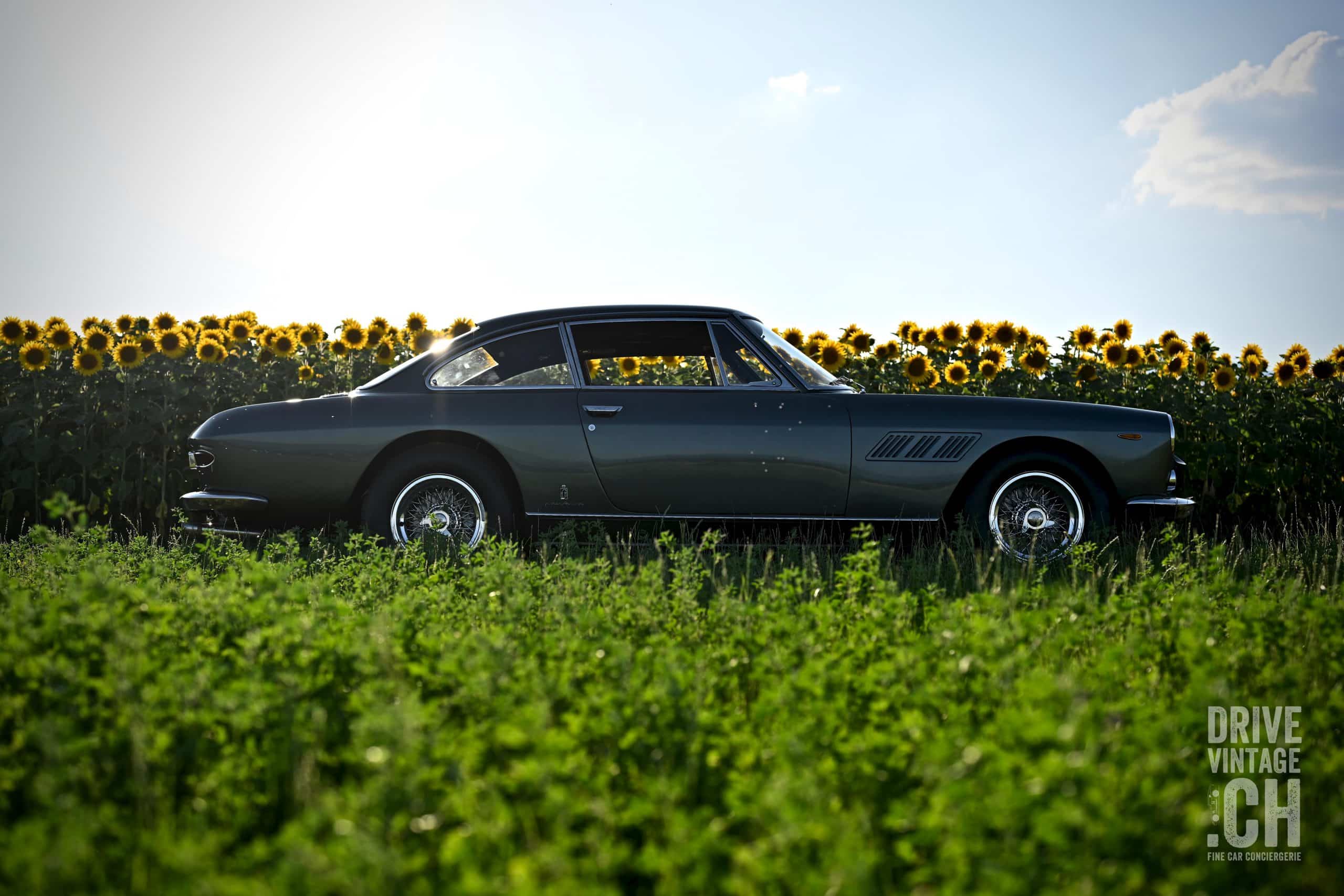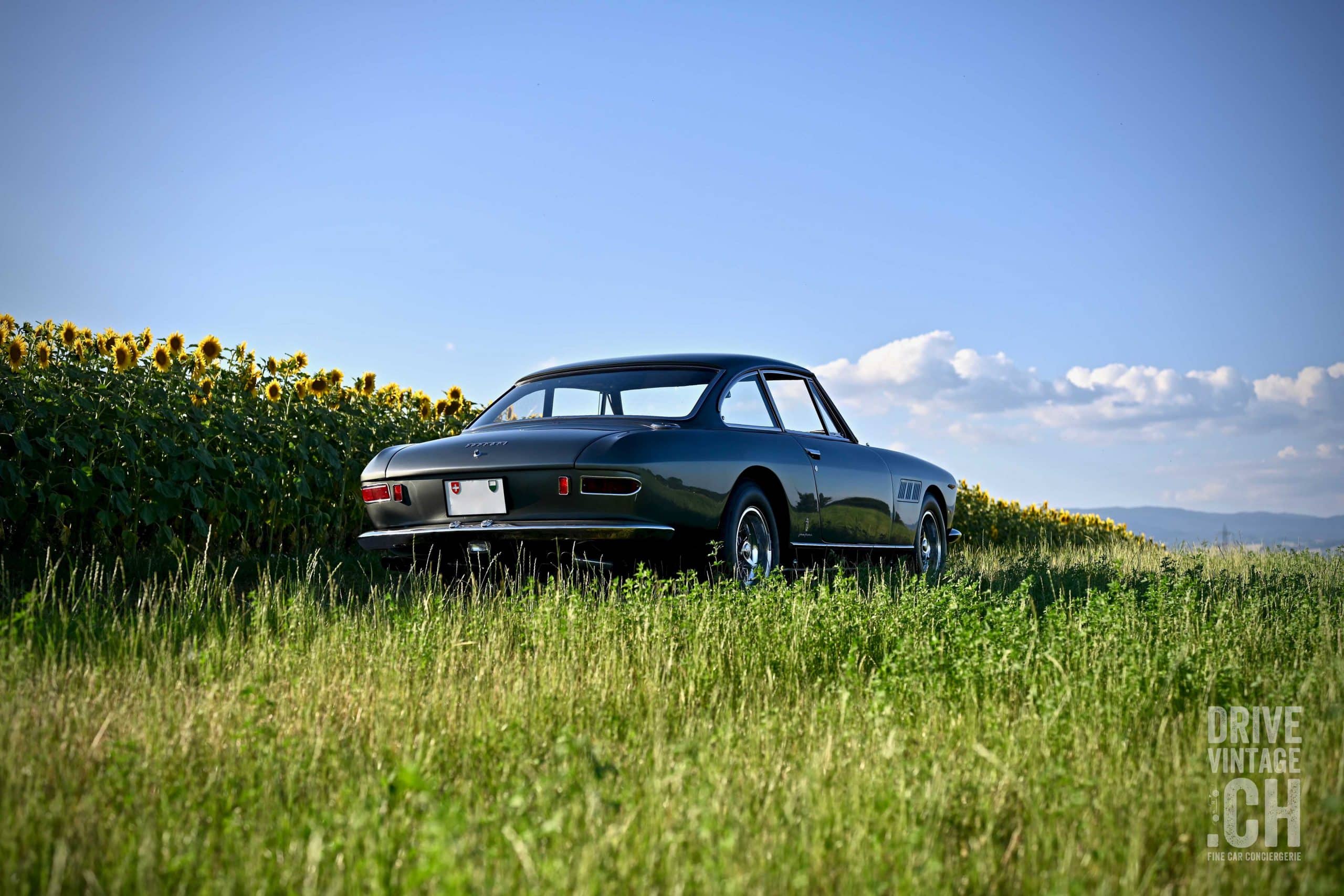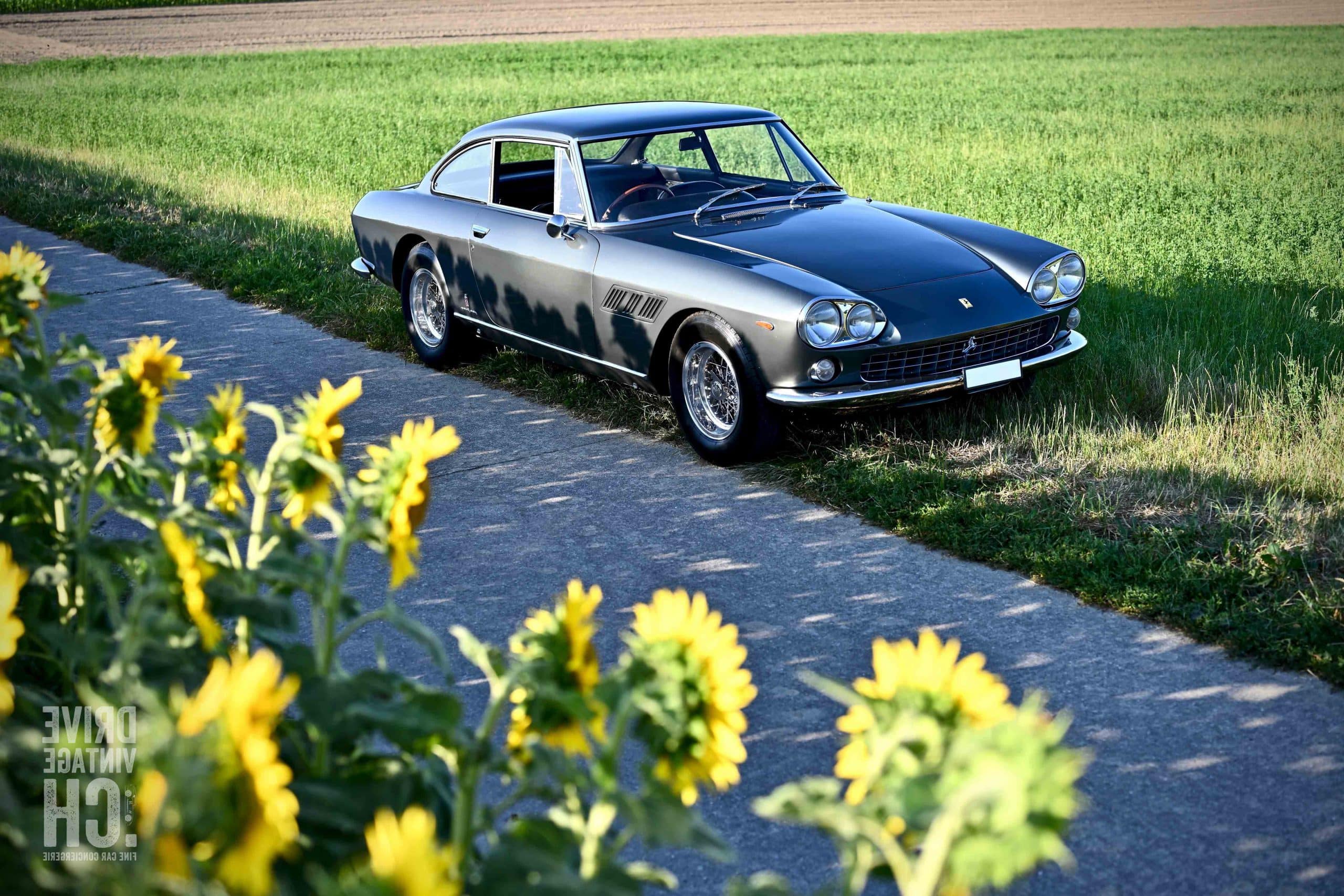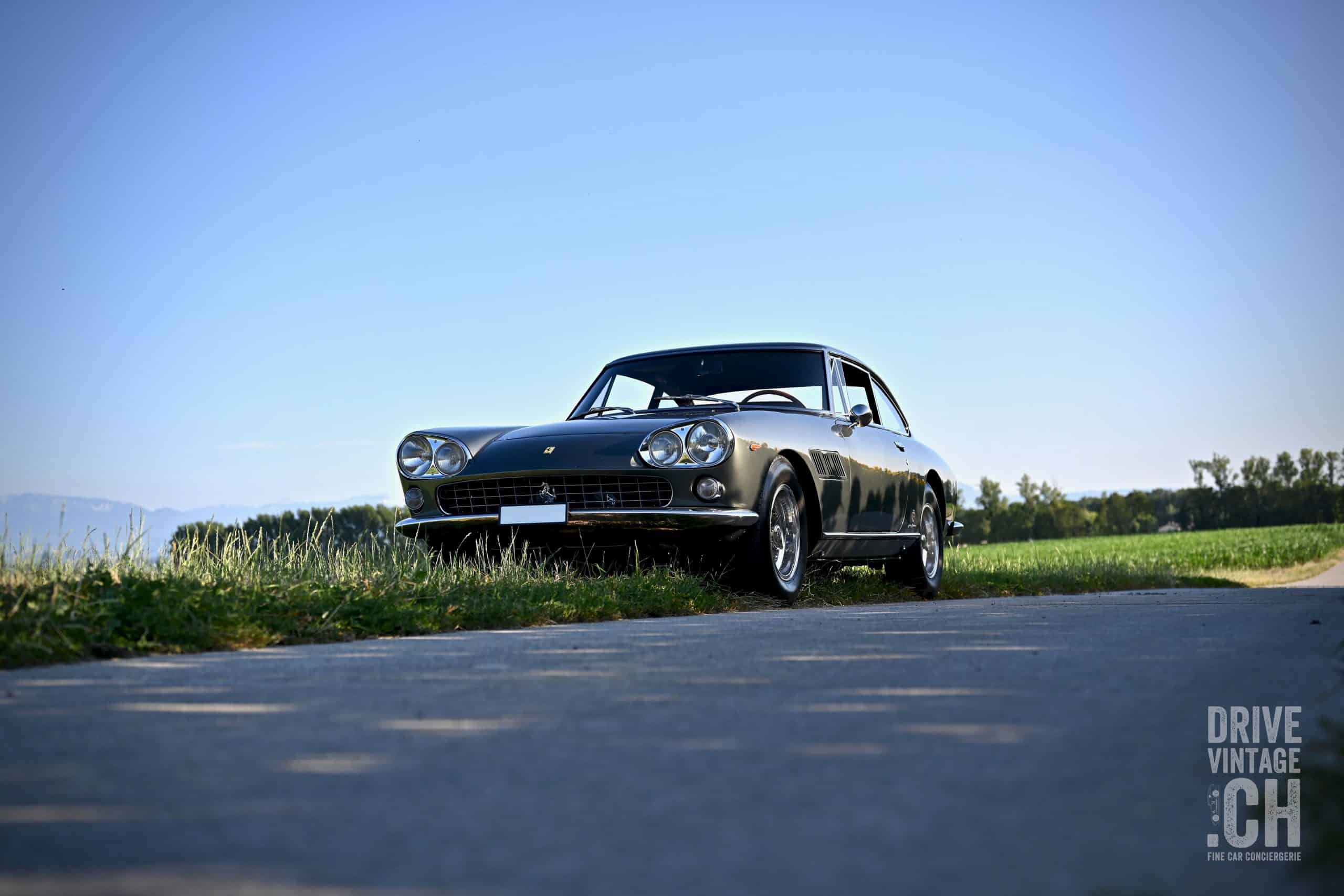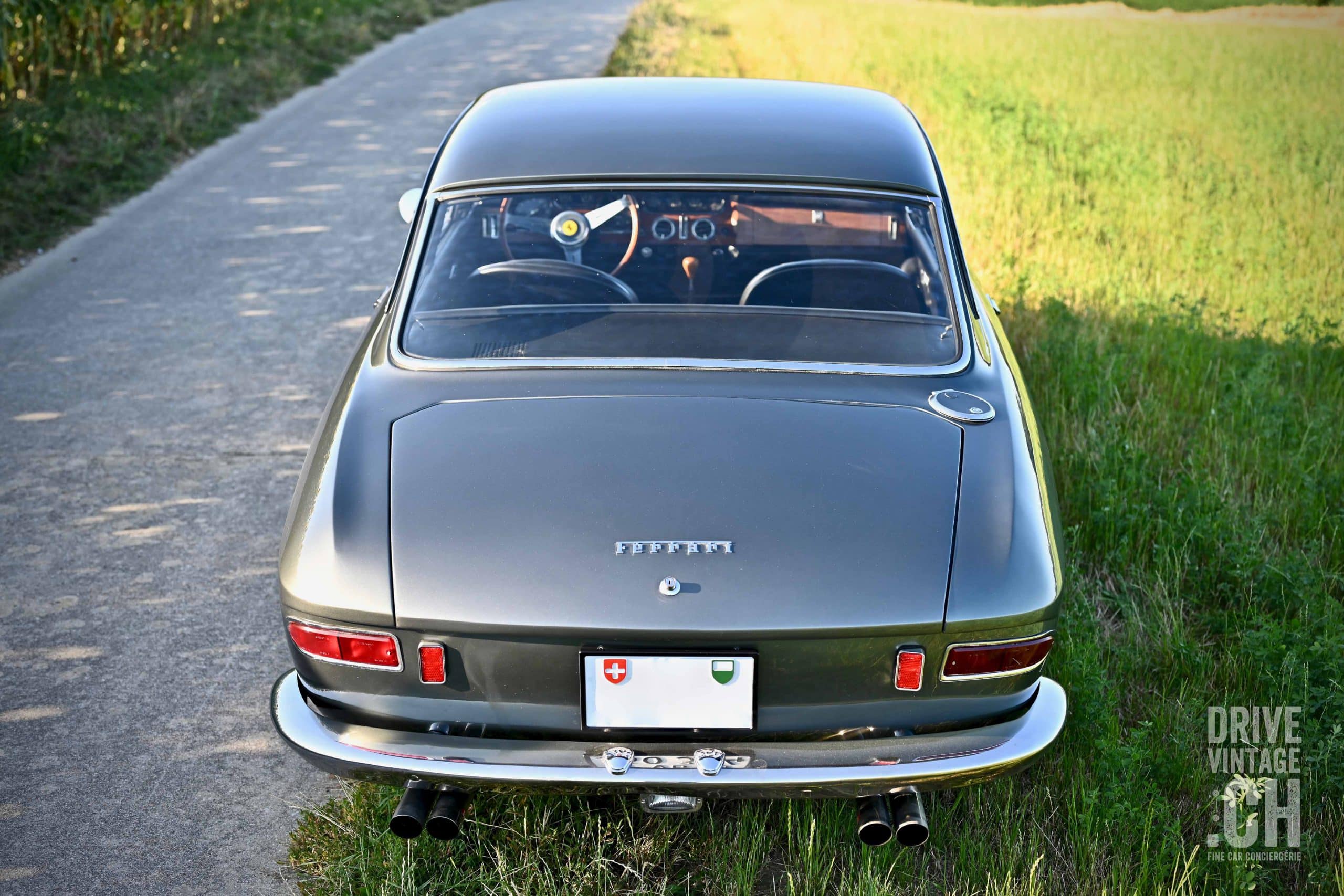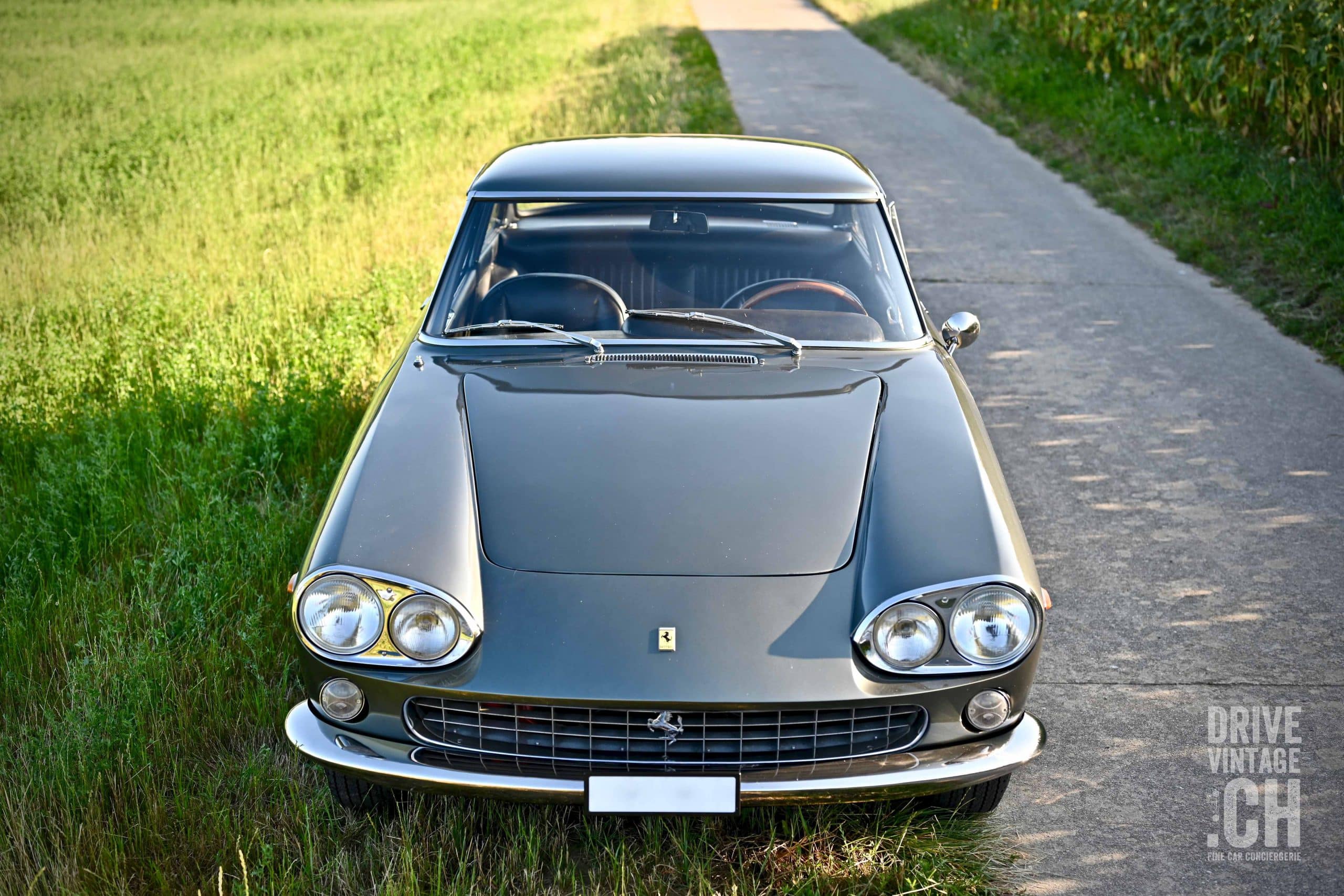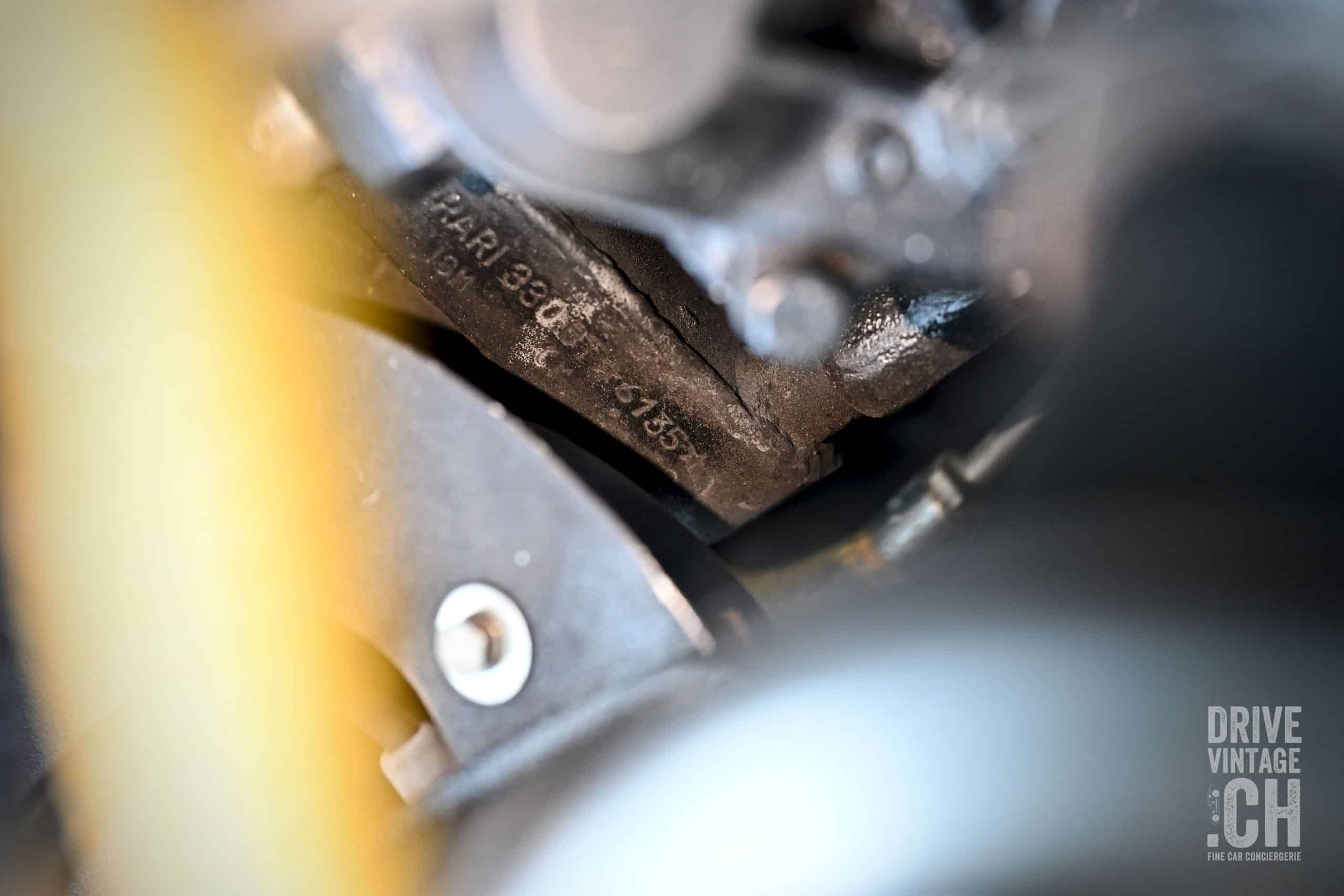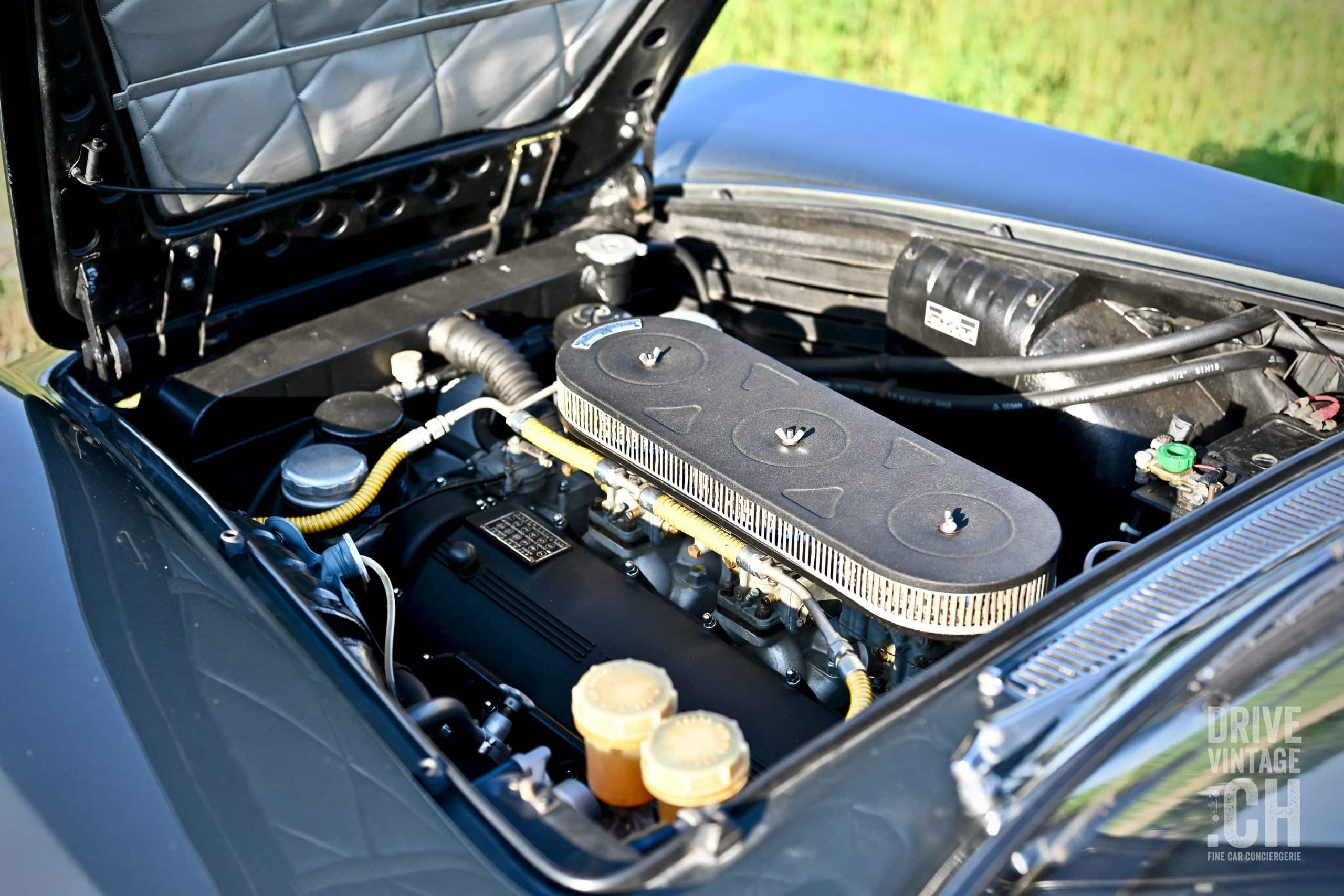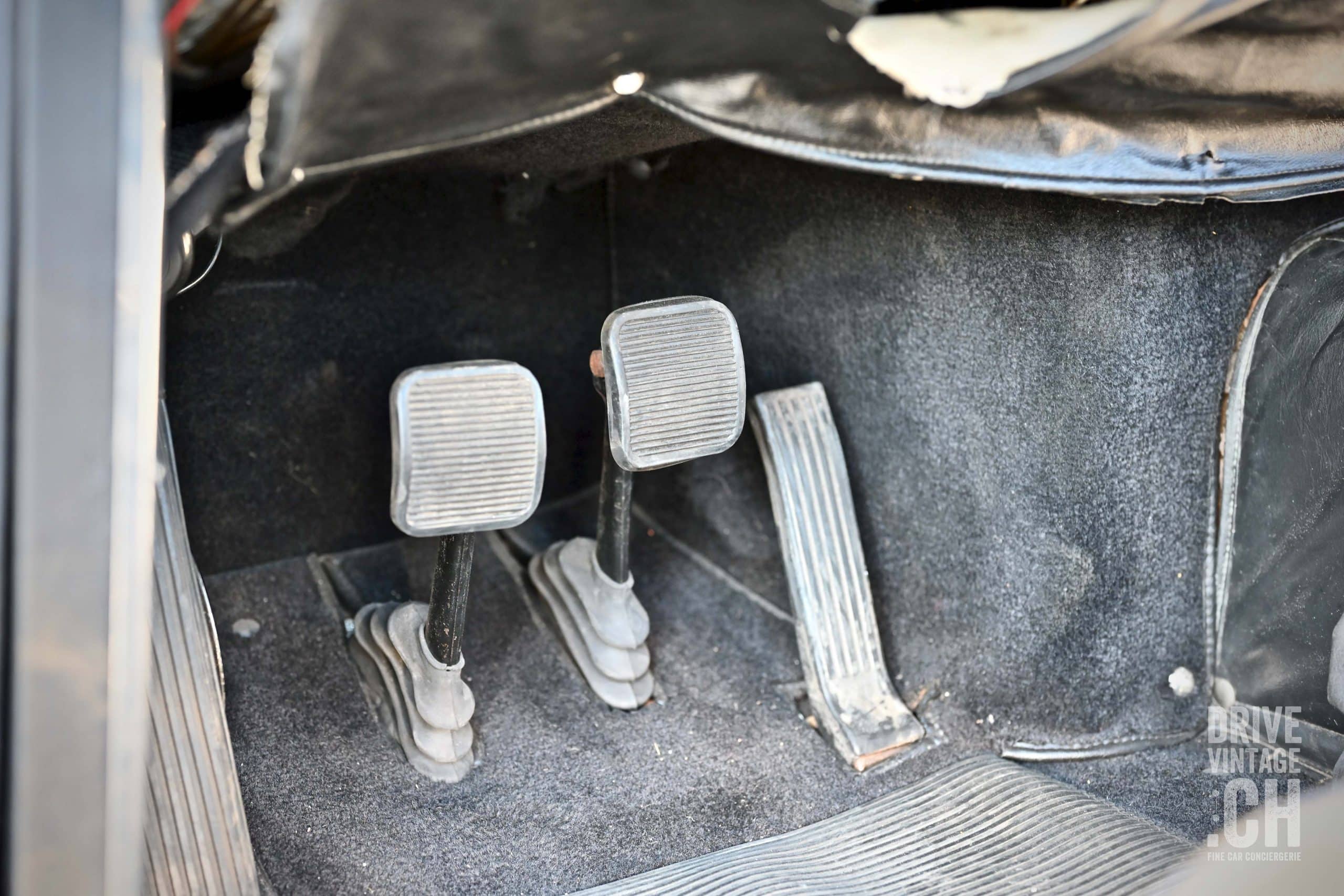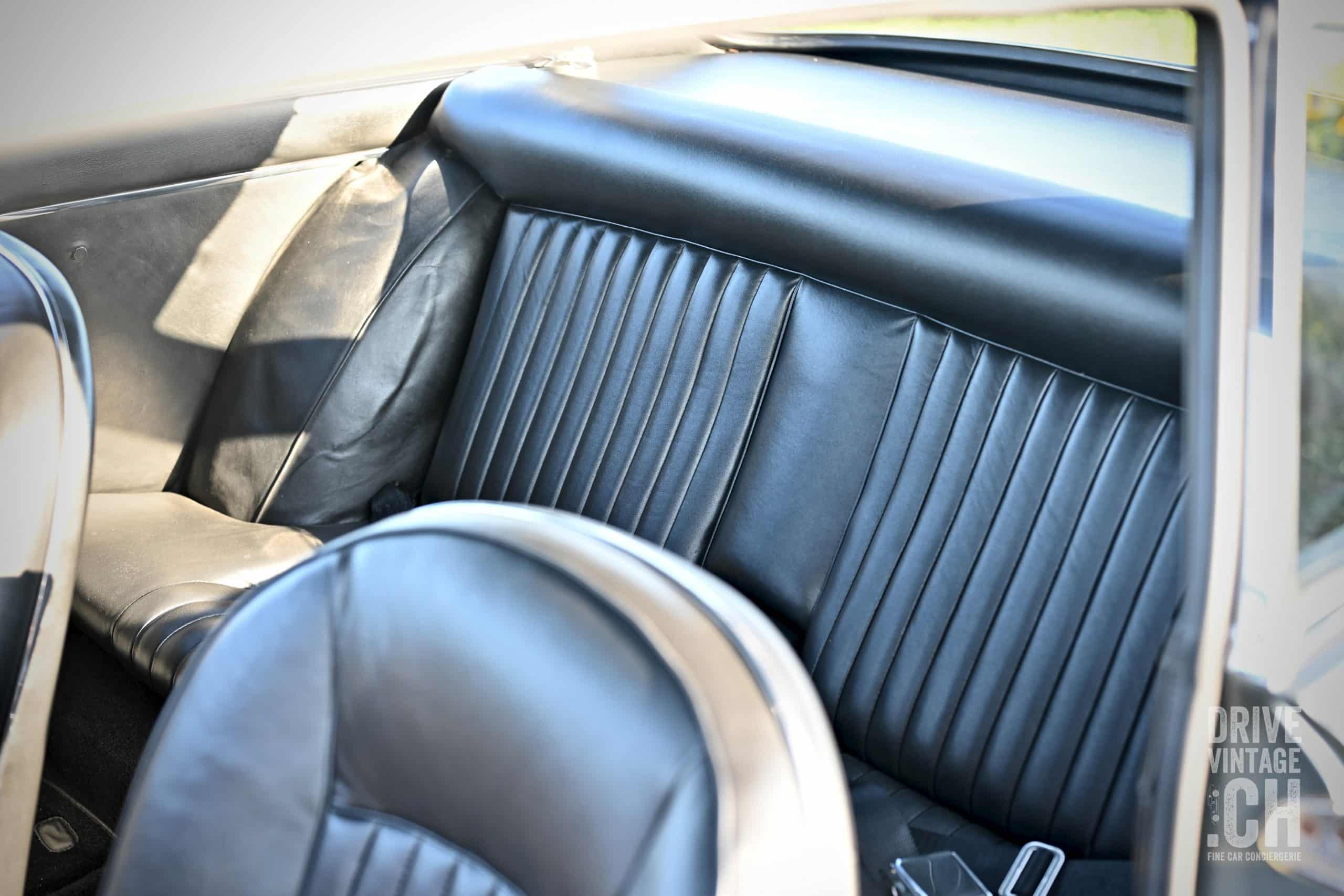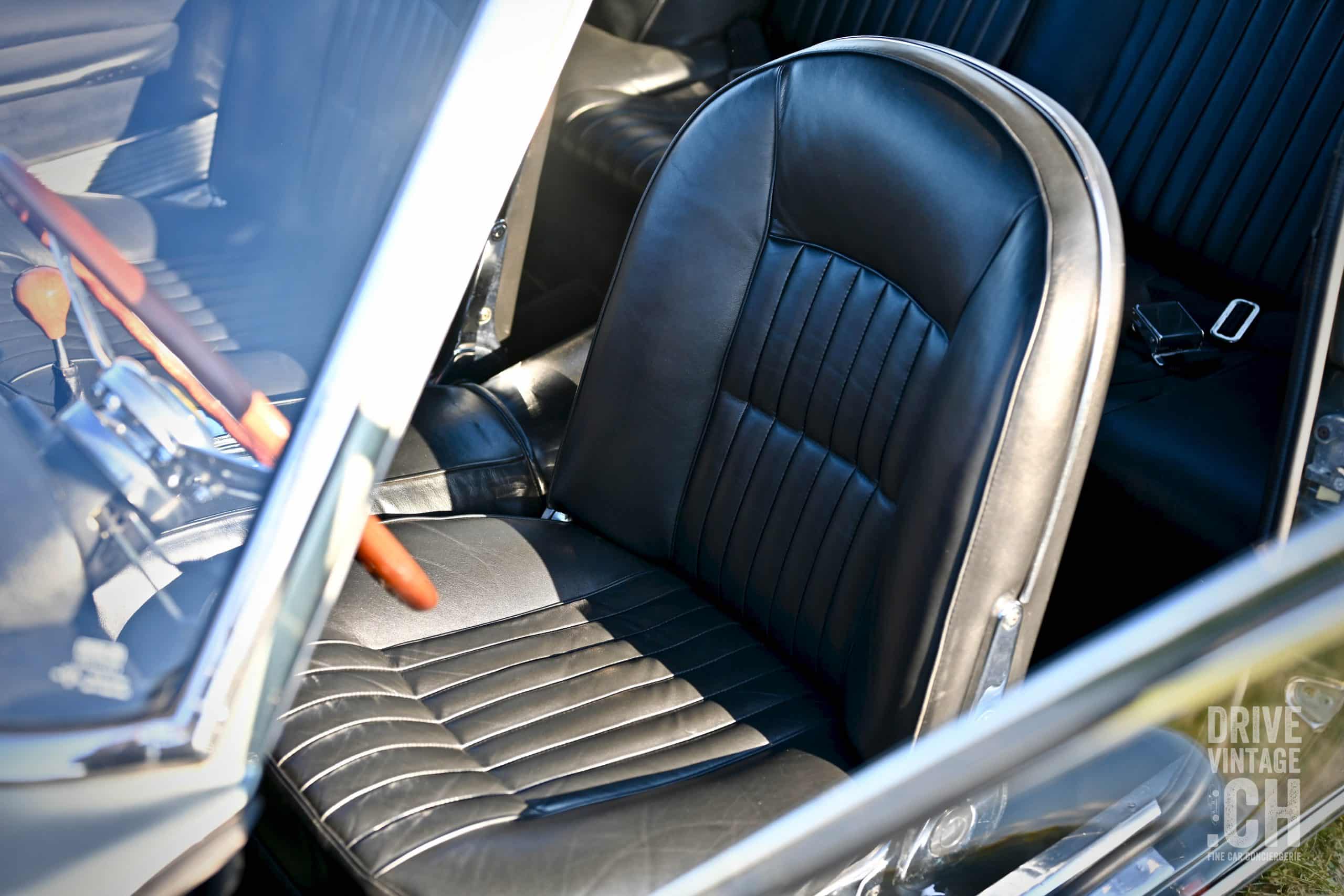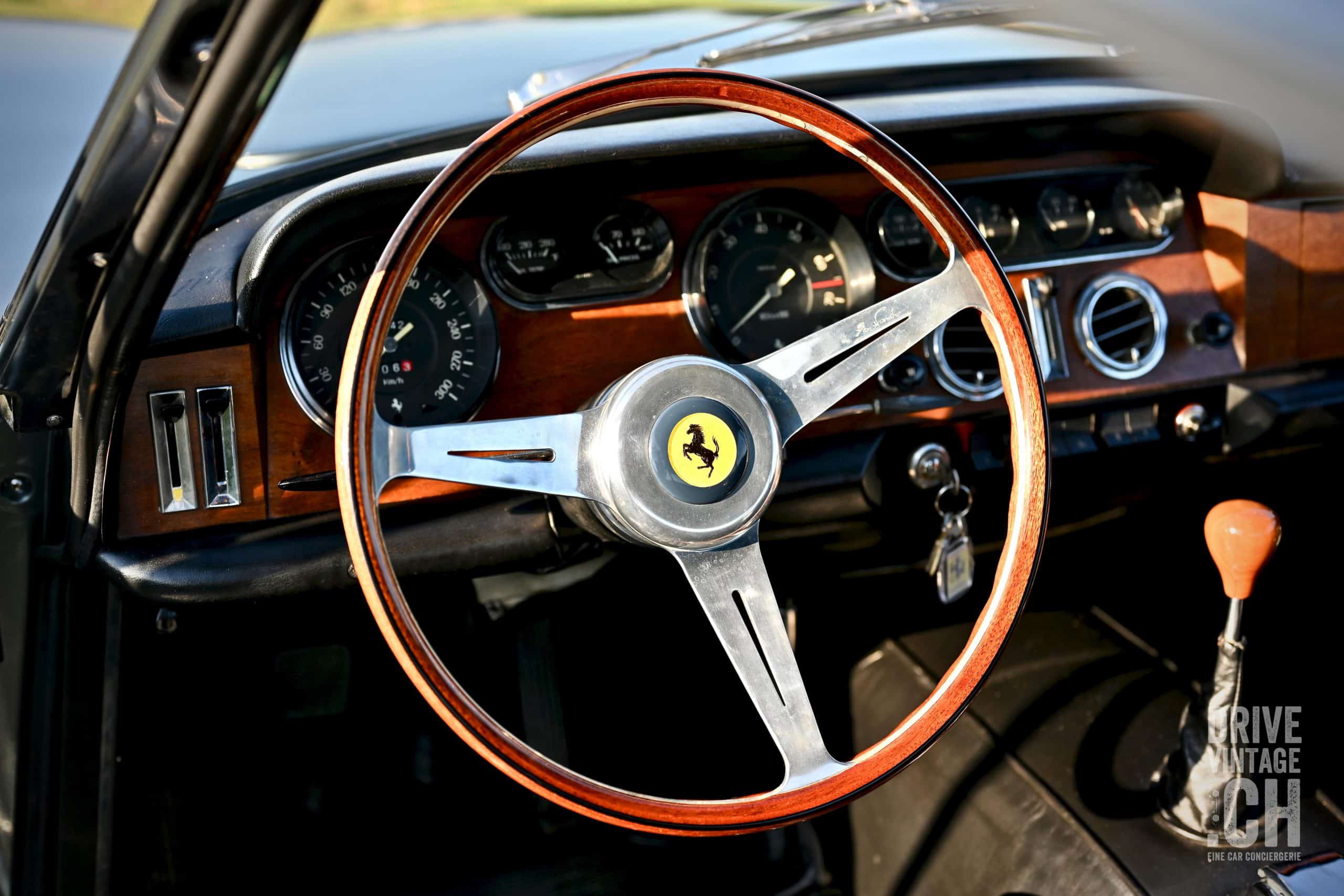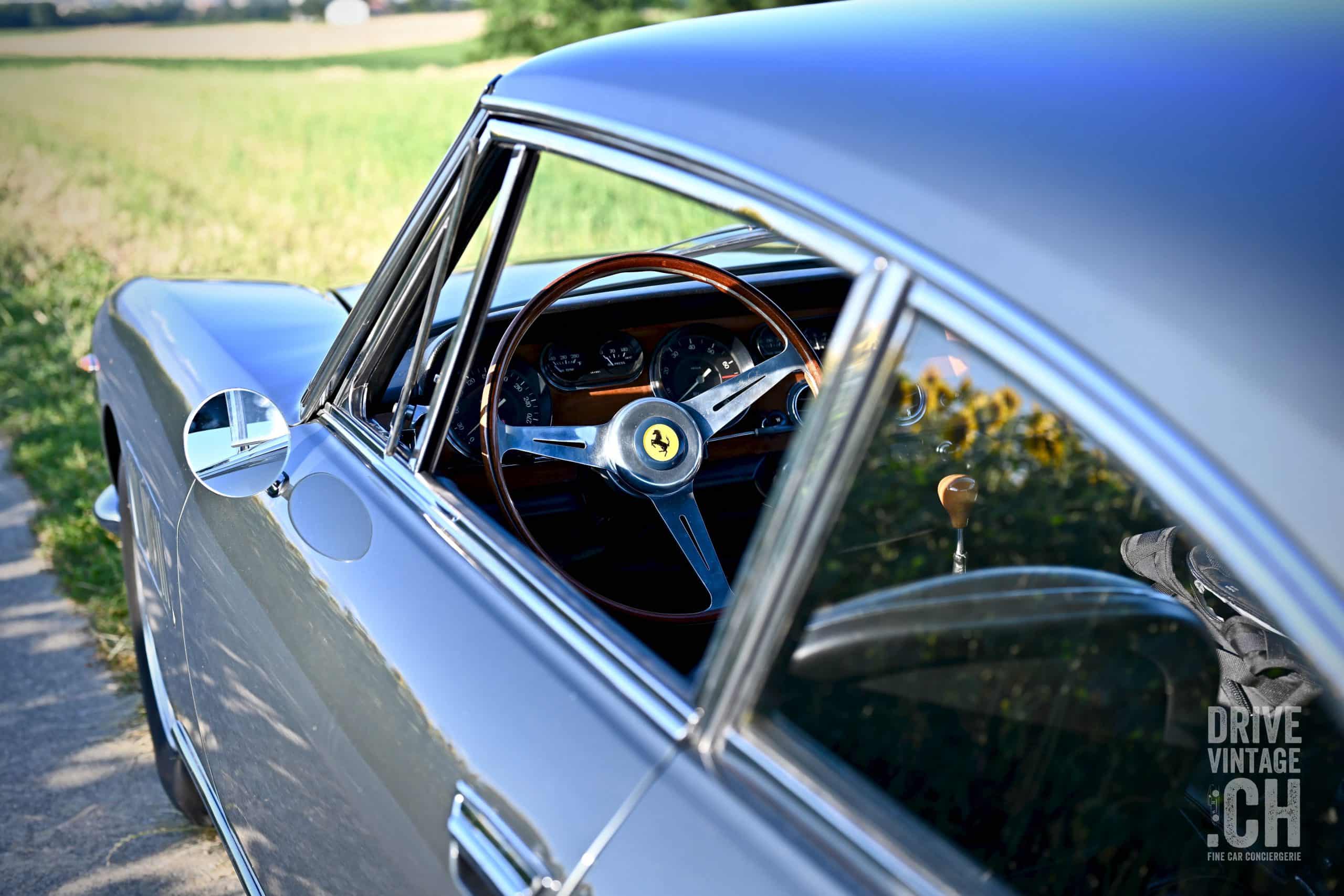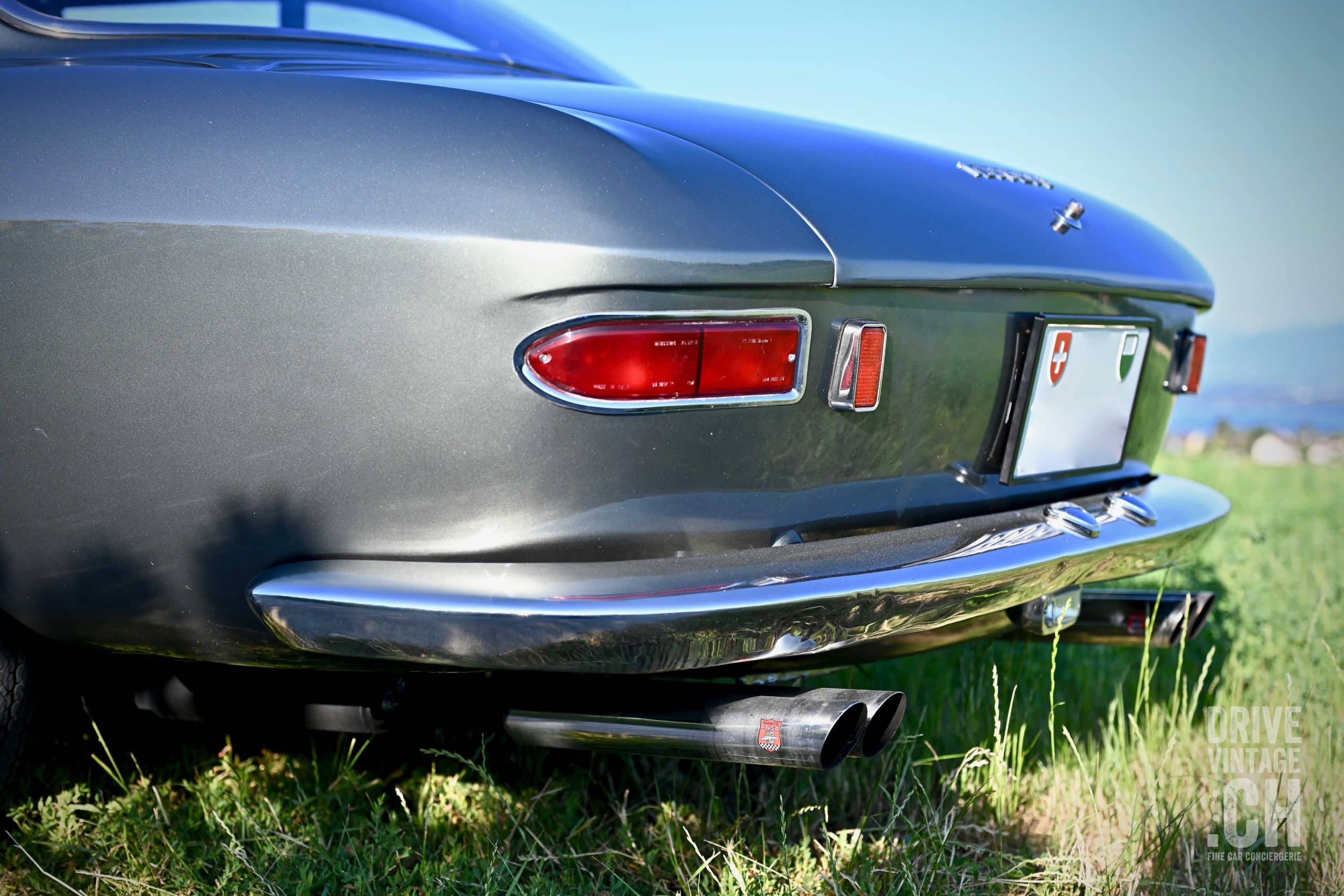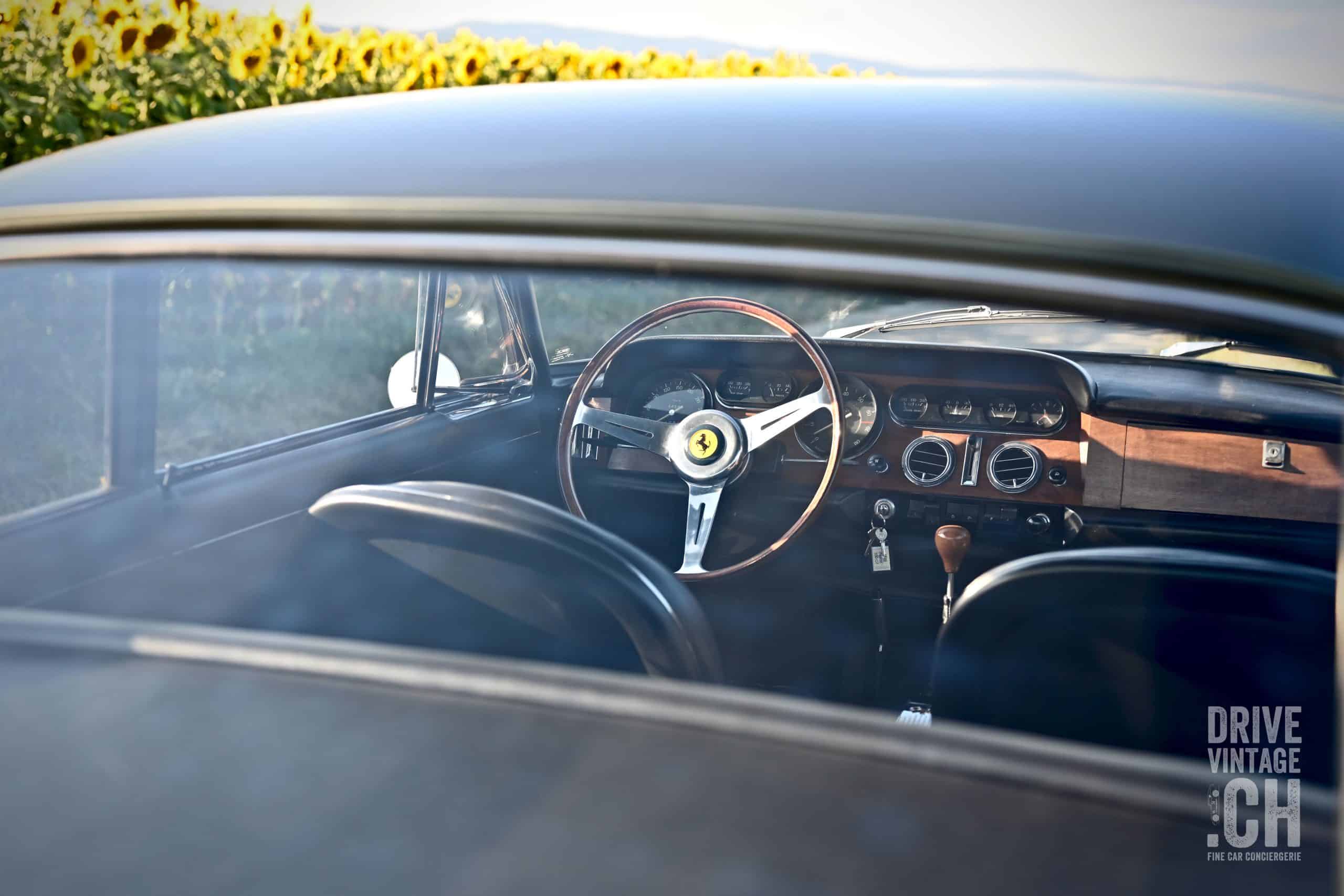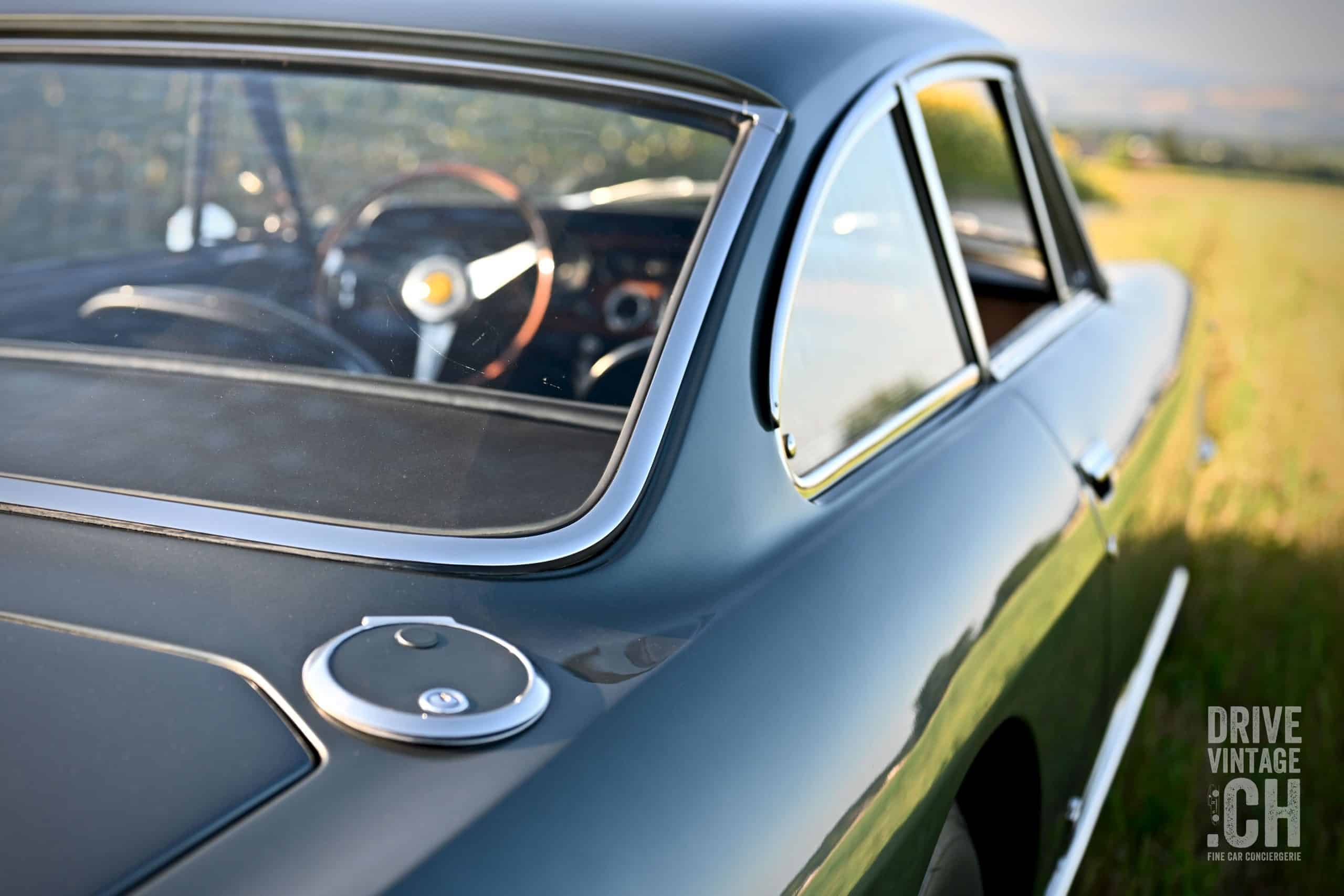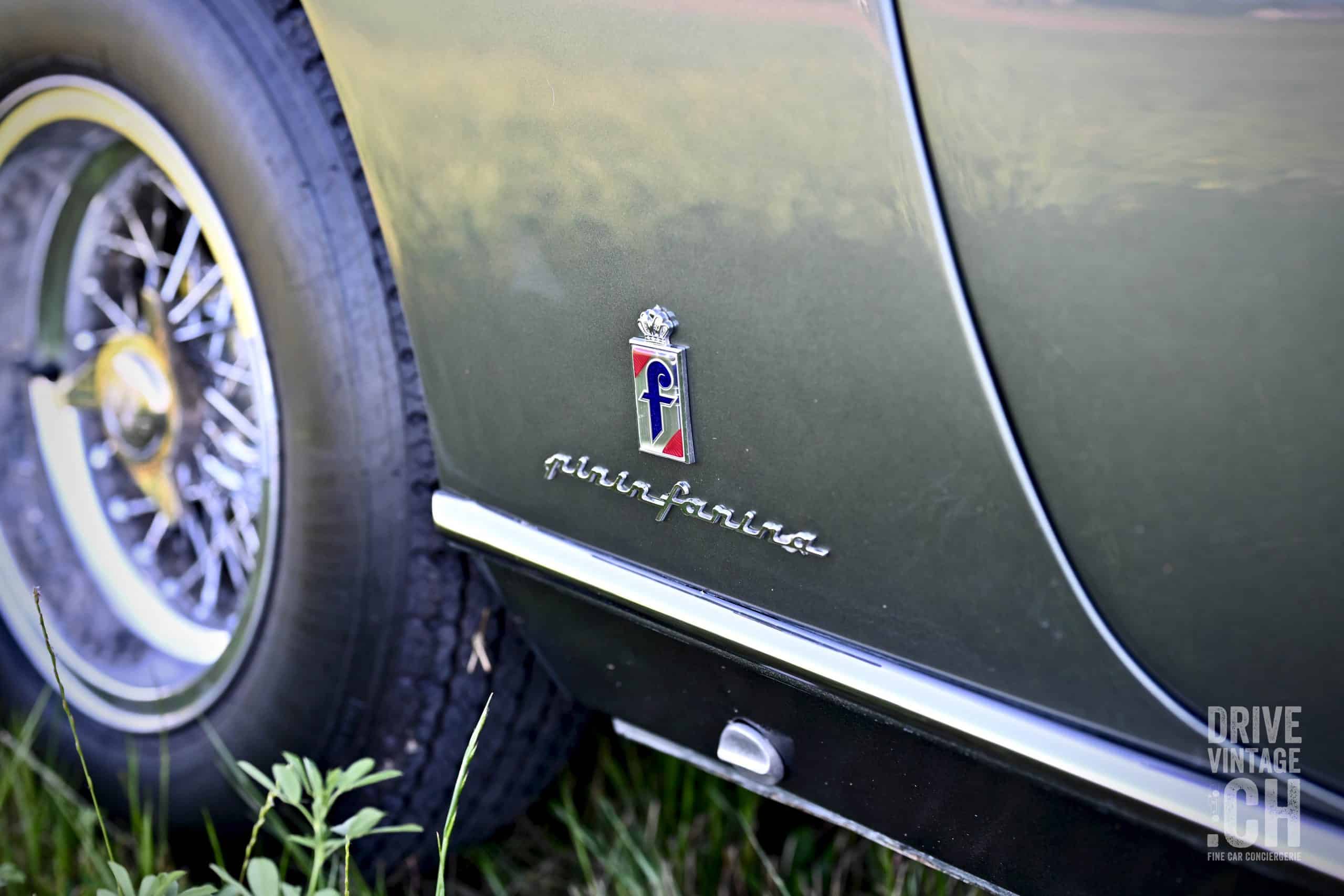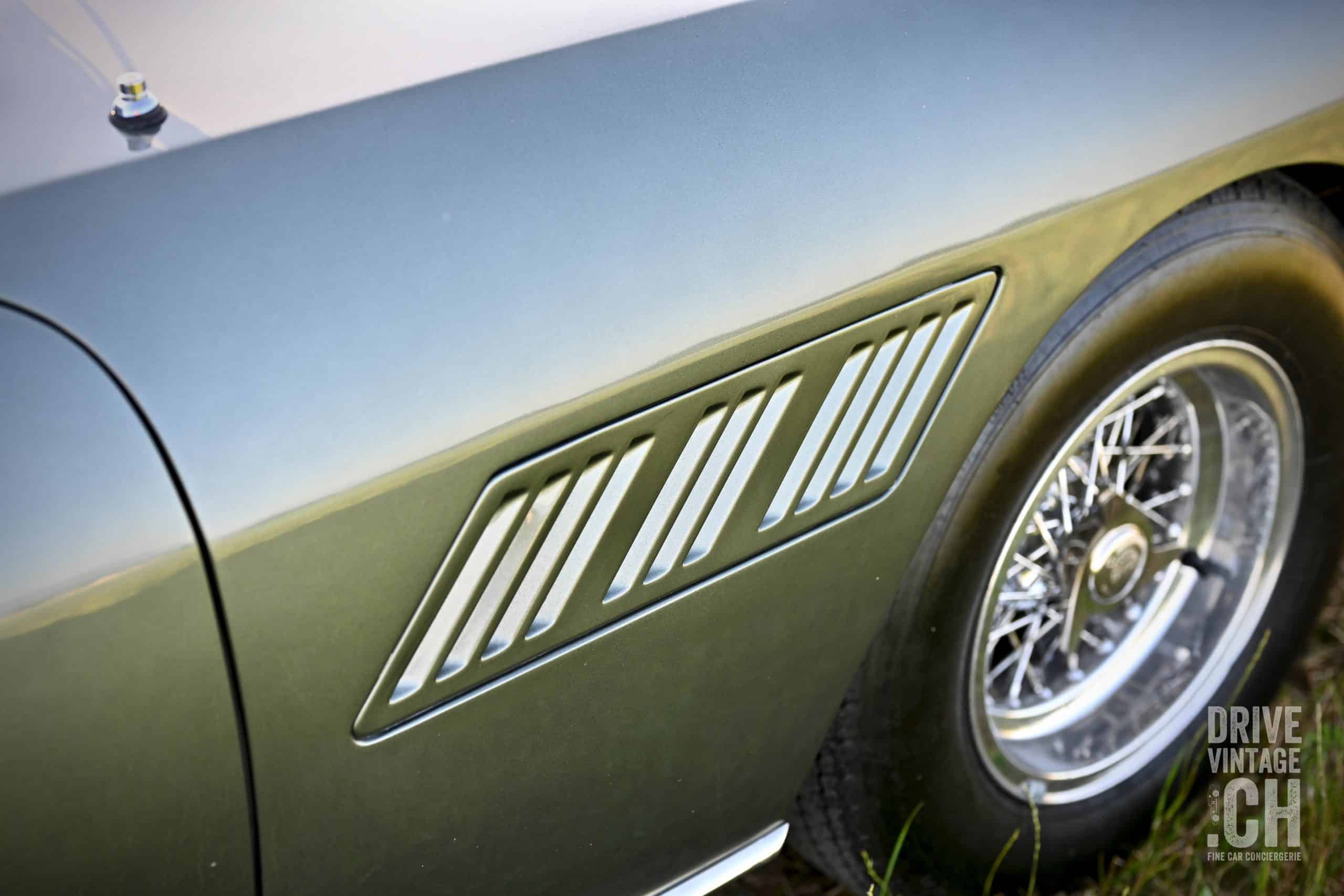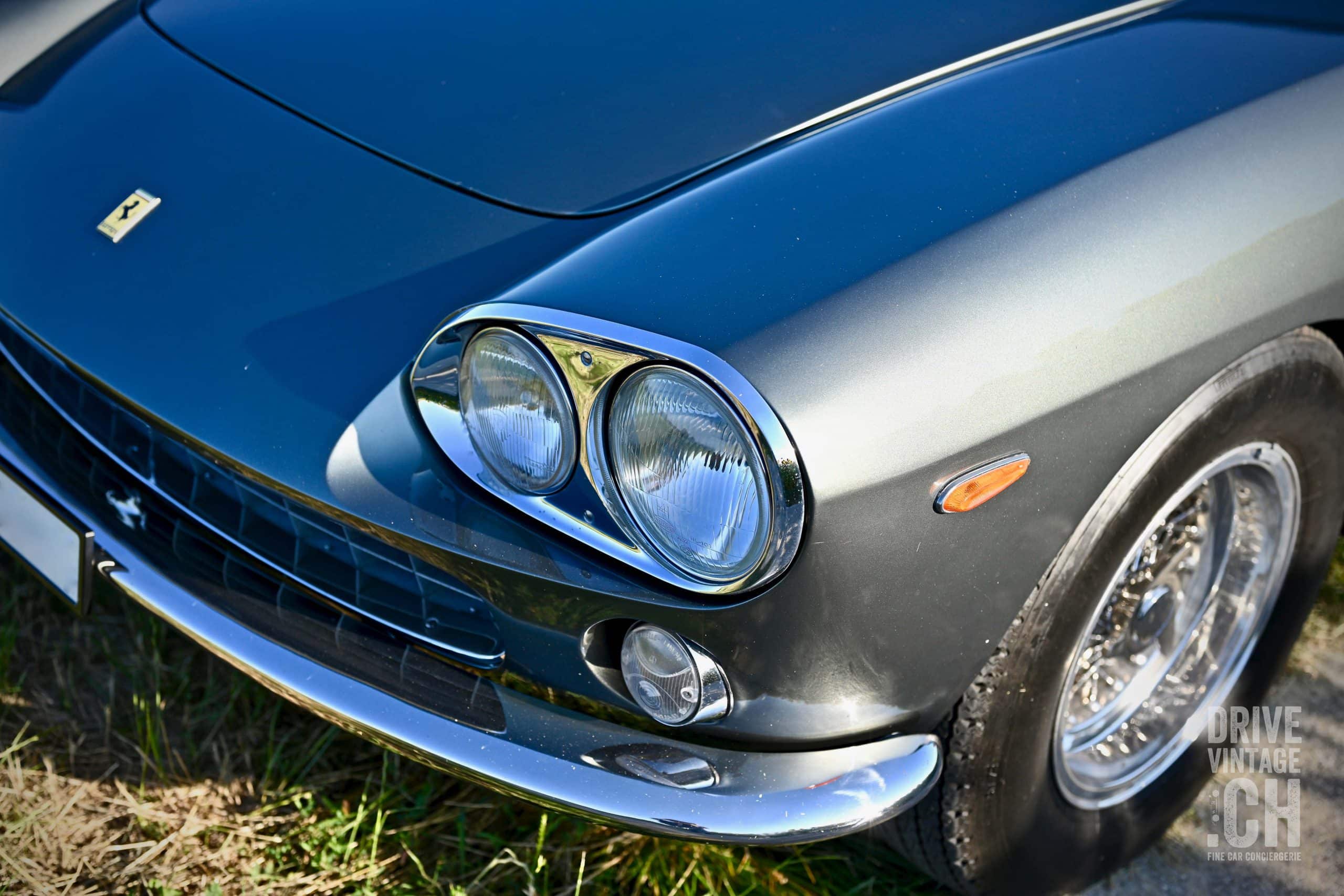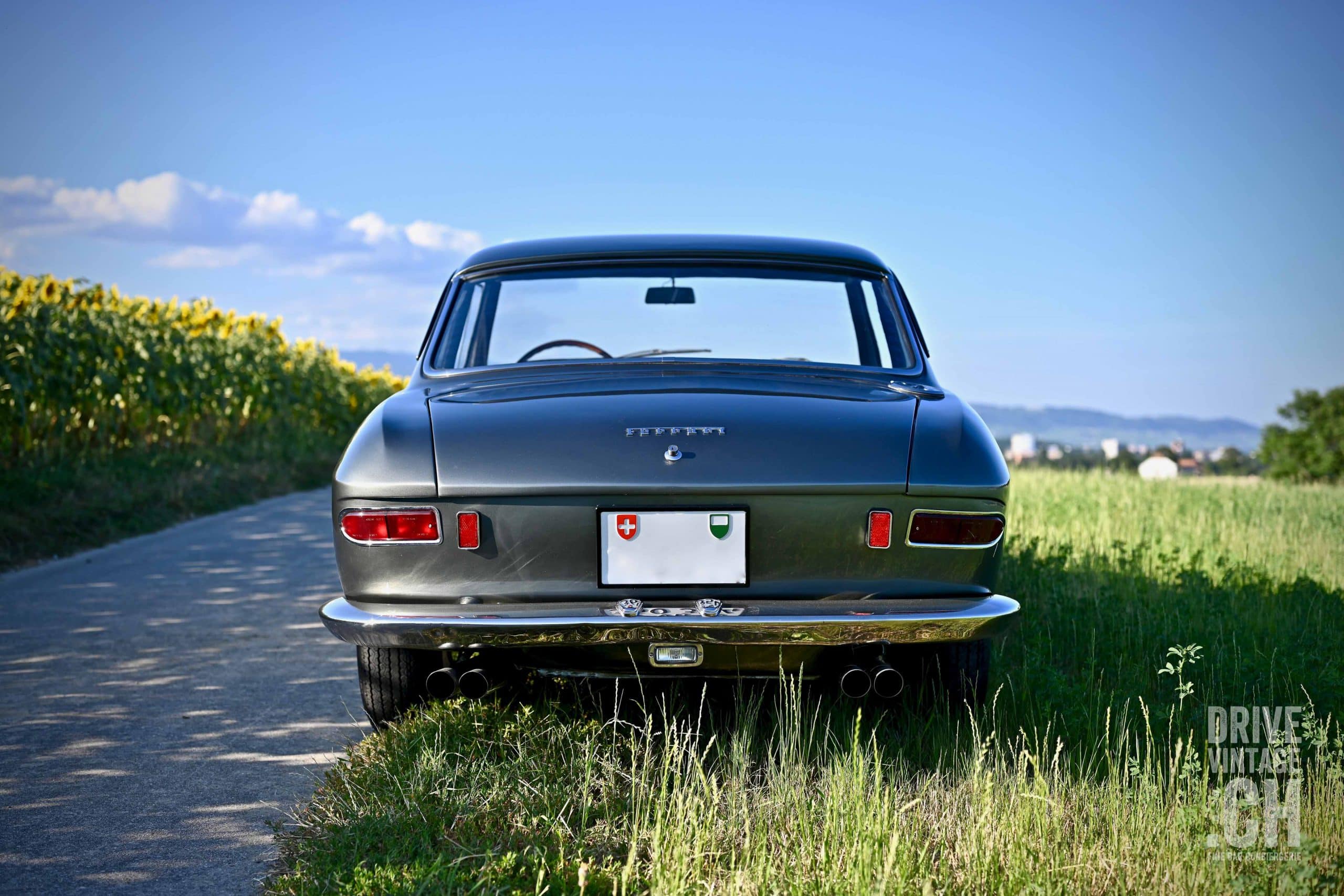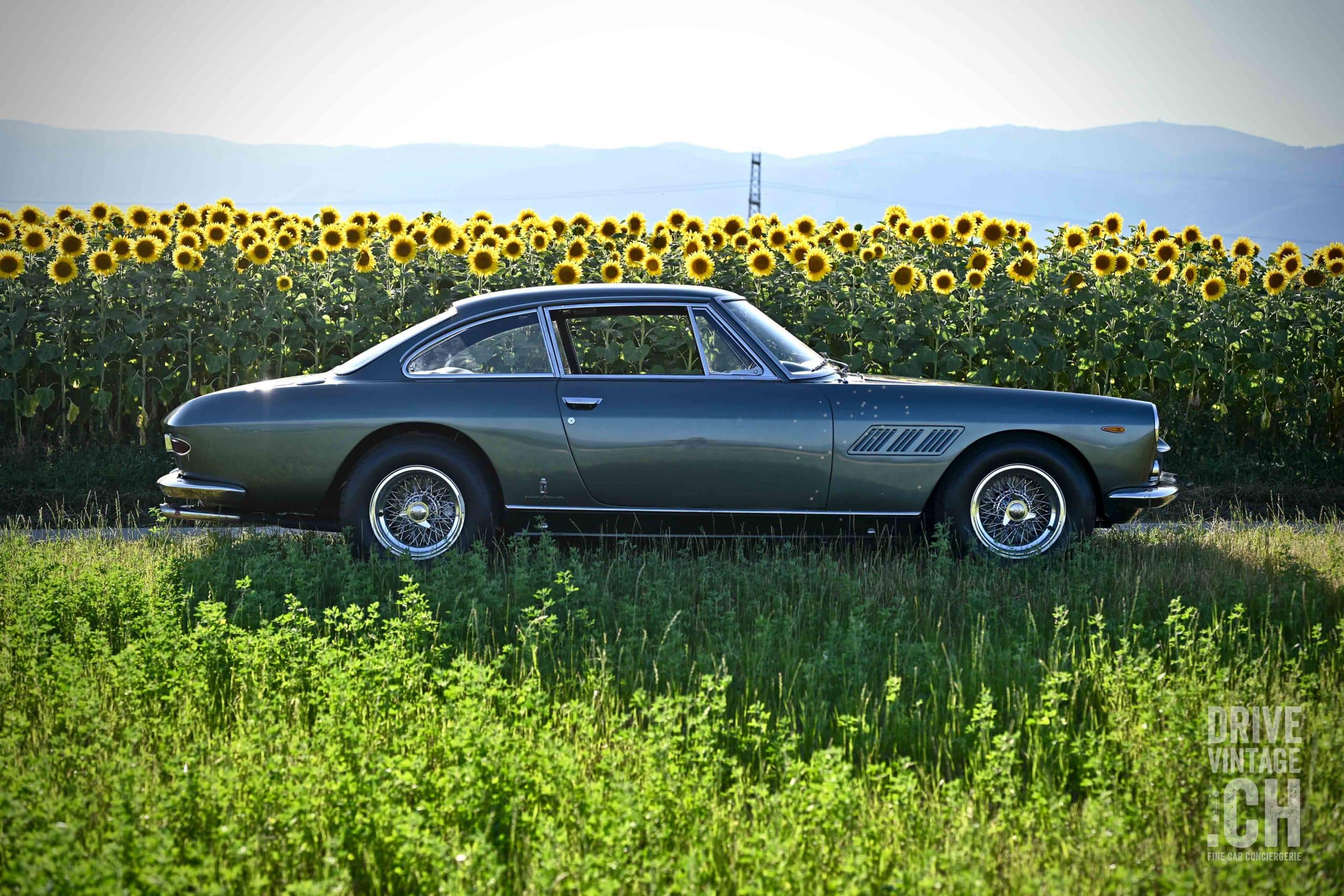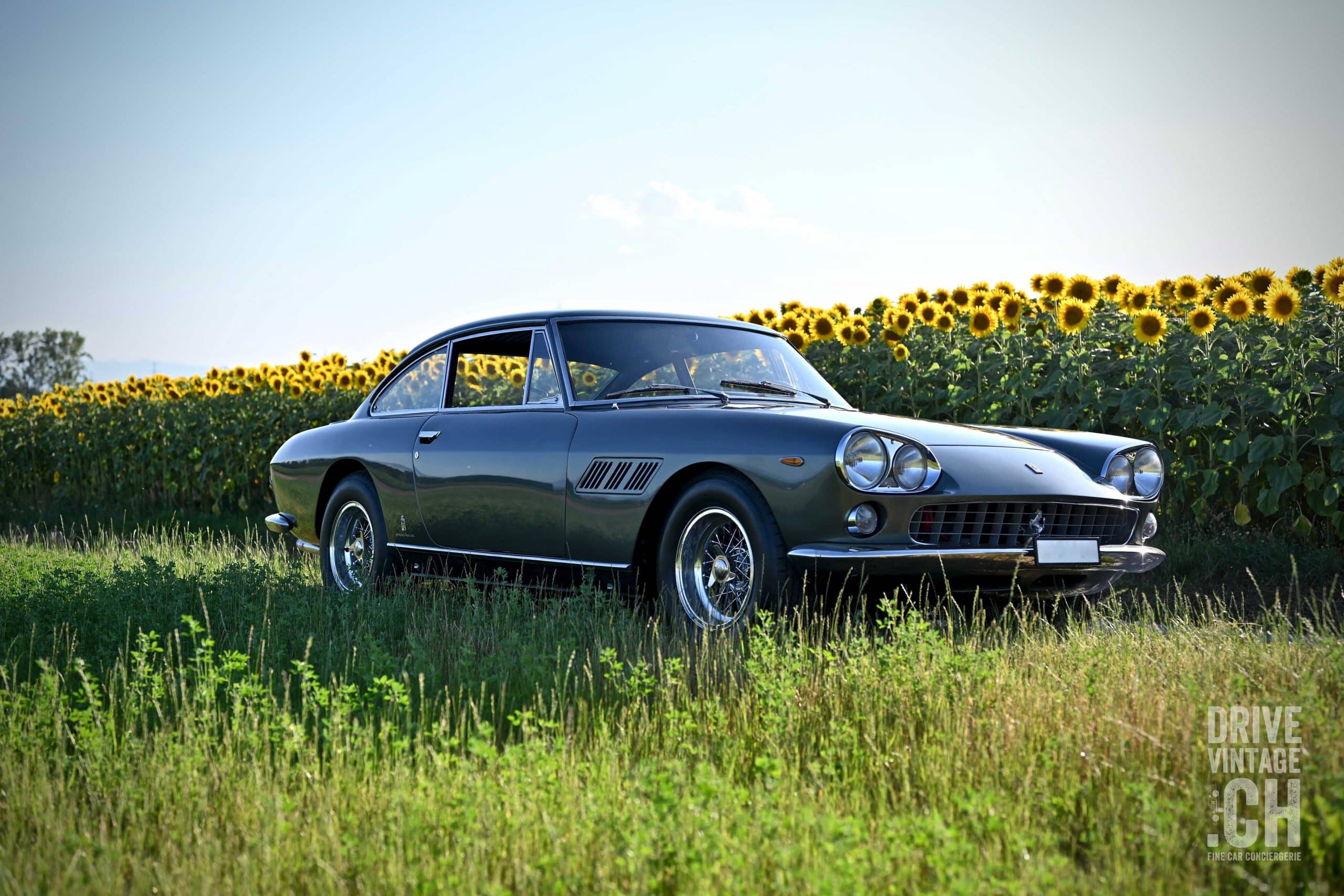FERRARI
FERRARI
330 GT 6135
P.O.R / CHF 100’000 / FOR SALE
The 330 America was replaced by the 330 GT 2+2, which was unveiled at the Brussels Show. It was fitted with the new 4-litre Type 209 V12, which sported a slightly longer engine block than the 400 SA series from which it was derived. The 330 GT 2+2′s elegant line was the work of Pininfarina, and two series were built. These differed principally in the front end treatment; the first series (1963-1965) having four headlights and the second (1965-1967) just two. Around 1,000 examples were built in all.
The 330 GT 2+2 coupé was presented at the annual Ferrari pre-season competition press conference in January 1964, making its public appearance at the Brussels Salon later that month. It was the replacement for the 250 GTE 2+2 model, which had ended its production run with a series of one hundred models known as the 330 America: visually identical to the 250 GTE, but fitted with a 4-litre engine.
As with its predecessor, the body design of the 330 GT 2+2 was from the pen of Pininfarina. It was very different, however, featuring a canted twin headlight arrangement, with a 7 in diameter outer lens and a 5 in diameter inner, echoing the layout shown on the 400 Superamerica Superfast IV (chassis 2207SA). This gave the frontal aspect a slightly American look, as dual headlights were very much in vogue there.
THIS MODEL
THIS MODEL
The general body lines became smoother and rounder, apart from the angular headlight surround pods, featuring a bulbous, rounded tail providing a more voluminous boot, with horizontal rectangular one-piece rear light assemblies that curved around the edges of the wings. The 50 mm increase in wheel base over its predecessor, together with a redesigned interior, gave rear seat passengers additional leg and head room, without any sacrifice to that of the front seats. The bodies were mounted on a 2650 mm wheel base chassis that had factory reference number 571 (series I) and then 571/65 (series II). All were numbered in the odd chassis number road car sequence, in the range 4963 to 7533 for Series I models, and 7537 to 10193 for Series II.
Construction was to standard Ferrari practice for the period: large section oval main tubes with substantial cross bracing, and sub assemblies welded to the main frame to support the body and ancillary equipment.
The model had independent front suspension, a rigid rear axle with leaf springs and telescopic shock absorbers, four wheel disc brakes with separate front and rear hydraulic circuits, either left- or right-hand steering,
209/66, a total cubic capacity of 3967 cc, and a bore and stroke of 77 x 71 mm. It had an outside vee spark plug arrangement, fitted with a bank of three twin choke Weber 40 DCZ/6 or 40 DFI carburettors, a twin coil and a rear of engine-mounted distributor ignition system producing a claimed 300 bhp. The engine was based on the
original Colombo ’short’ block design, but was slightly longer with increased bore centres to provide adequate waterways with the larger diameter cylinder bores.
The difference in engine type number referred to the number of mounting points: 209 had four, while 209/66 had two, the latter arrangement being used from chassis 08729. The engine was coupled to a 4-speed, all synchromesh gearbox, with an electronically operated overdrive fifth gear on most Series I cars, and a 5-speed,
Production for the 330 GT 2+2 ran from 1964 to 1967, when it was replaced by the 365 GT 2+2. During this time, 625 Series I and 474 Series II examples were produced, outselling the preceding 250 GT 2+2 model during a similar production life span; the 2+2 concept proving to be a very popular ongoing configuration.





